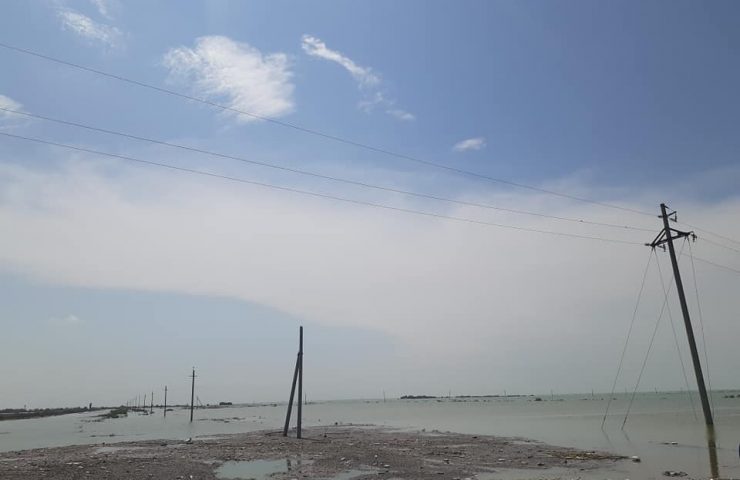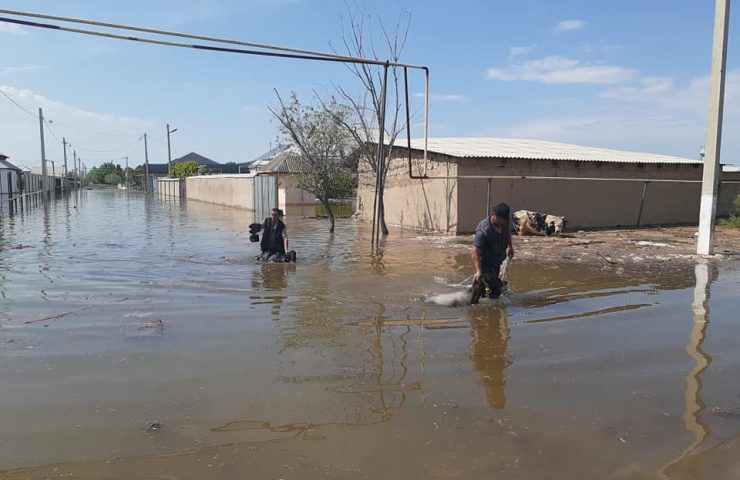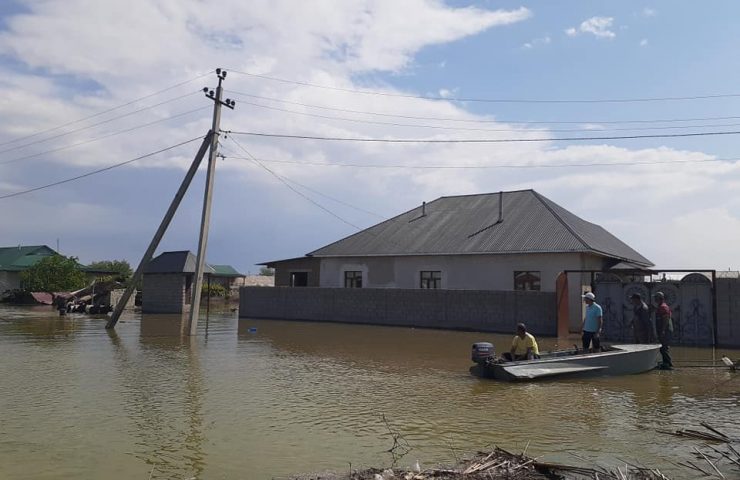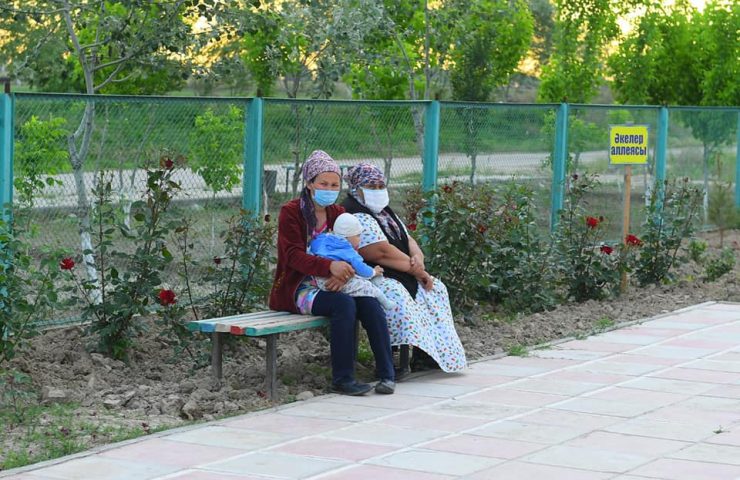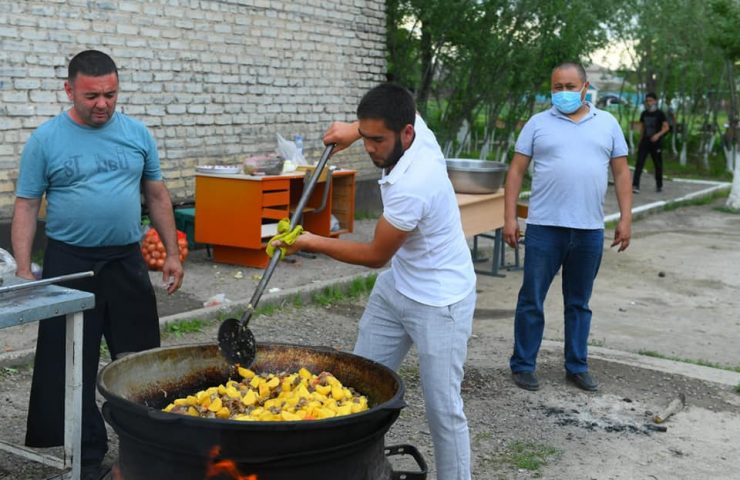Five flooded villages, over 31 thousand evacuated residents: these are the consequences of the floodwaters from Uzbekistan for Southern Kazakhstan. The evaluation of the scale and damage the disaster caused will only be possible after it ends. Meanwhile, the water keeps coming.
Follow us on LinkedIn
A dam breach in Uzbekistan caused the flood in the southern district of Kazakhstan. To reduce the volume of water in the reservoir, the Uzbek side evacuated it through the central water canal. This water filled the near-border reservoirs of the Maktaaral district of Turkistan region of Kazakhstan. The water flow sharply increased, overflowed the Central Golodnaya Steppe Canal and, flooding the fields, approached the houses.
The Zhanaturmys village, located three kilometres away from the border with Uzbekistan and six kilometres away from the Canal, was damaged first, and then water flooded Zhenis village. The Akimat of the Maktaaral district created an emergency response team, and at 01:30 AM on May 2, they announced the anthropogenic emergency. It was decided to evacuate the population. In total, 5400 people were evacuated from four villages during that night.
Maktaaral district, Zhenis village. Photo: Ulzhan Tolen
According to the Akimat, as of 12:00 PM on May 5, more than 31 thousand people were evacuated. 845 houses were flooded in five villages: Zhanaturmys, Zhenis, Firdousi, Orgebas and Dostyk. 14 villages are in flood-prone areas, 10 of them are highly endangered.

“I already thought that I would not be saved. However, the police officers arrived in time and saved me. I thank them for this, but I worry about my cattle and crops. About 20 heads of cattle died. I do not know what to do now,” complains Tilla Fayziev, Firdousi village resident, who was inside the house during the flood.
The deputy akim of the Turkistan region Saken Kalkamanov, at the online press conference on his Facebook page on May 3, assured that the affected residents’ problems will be considered, and the damage will be compensated from the state and region’s funds.
“However, we will consider compensations and other payments after the peak of the emergency,” said Kalkamanov. “A detailed assessment will be carried out after the water leaves these settlements.”
Now, there are only preliminary results of the inventory works in the agricultural sector. A special working group from the regional department of agriculture evaluates them.
According to the deputy head of the department Turganbek Ospanov, over 7,639 hectares of crops were flooded. According to preliminary estimates, the damage will amount to 404 million tenge ($ 954.75 thousand). 85% of flooded crops are cotton. The district is the main producer of these agricultural crops in Southern Kazakhstan.
In addition, 3,115 heads of cattle, 1,101 horses, 585 sheep and 34 camels were evacuated from seven villages. The number of drowned animals is unknown. The works on calculation of the exact loss and damage are ongoing.
Maktaaral district, Firdousi village. Photo: CABAR.asia
Will There Be a Compensation?
The day before, the head of the emergency department of the Turkistan region Nurgali Zhunusov at a briefing said that on May 1, after the news about the situation, they called the Ministry of Emergency Situations of Uzbekistan.
“We were assured that at 8:15 PM, the evacuation of water from the Sardoba dam to our direction was completely stopped. However, when we arrived in Maktaaral, in Zhanaturmys village, I personally witnessed that this did not have any effect. The speed of the flow was very high and it made loud noise,” said Zhunusov.
The deputy akim of the region, Saken Kalkamanov, added that there were no assumptions that water would arrive through the central water canal to the Turkistan region. Later, after the emergency introduction, the Uzbek side officially assured at various levels that the situation was under control: that not a drop of water would appear in Maktaaral and that the water level in the canals reduced.
However, at the same time, as Kalkamanov said, the water level in the Kazakhstan’s canals and collectors increased by an average of 10-20 centimetres per hour, and the water continued to arrive.
“All the statements from the Uzbek side assured that there was no great danger to Maktaaral territory,” the speaker emphasized. “There are large canals, they are full sometimes, and overflows happen. This is a common thing for this region. However, no one expected that almost a third of the district’s territory would be under the water. Moreover, the interaction at the interstate level is quite complicated, because it takes a long time to coordinate the information.”
However, the lawyer and public activist Aigul Orynbek believes that the Akimat’s excuses are not very convincing in the current situation. She notes that it was necessary to evacuate people as soon as the news about the dam collapse arrived:

The resident of Orgebas village Ayman Batyrbekova said that they were told that the water would not approach, and the evacuation and rescue operations began only a day after the dam collapse.
“Our men found cars themselves, took out all the women and children. I ran home and grabbed only the documents. If we knew in advance, we would be able to pack our bags. I have seven children; I took them to my relatives’ house. We no longer have a home,” says Batyrbekova.
Evacuation points for the residents of the damaged villages were set up in schools. Photo: CABAR.asia
Many residents of the damaged villages think that the Uzbek side should pay reparations for the damage.
“Previously, there was no water in the areas of Maktaaral and Zhetisay. We asked for it many times, but Uzbekistan refused. Last summer, we watered tomatoes with tap water. It is not only I; all the people from my village do this, because there is no other way. If the dam would have collapsed in Kazakhstan and the Uzbek villages would be damaged, they would submit a list of them and present an obligatory invoice,” the resident of the Zhetisay village Ayagul Mantay says indignantly.
The expert Mukhtar Tumenbaev holds similar opinion.
“It is necessary to request reparations from Uzbekistan for the caused damage and lost profits. Is it rough? Yes, it is, but it is effective. In good years, it would be possible to excuse the fraternal people. But not this time,” Tumenbaev said.
For now, authorities are in no hurry to decide about reparations and do not comment on journalists’ questions.
“This is a different state. I think that negotiations between the two countries will be held at a state level, the causes and consequences will be clarified. We cannot blame anyone,” said deputy akim Saken Kalkamanov at a briefing.
However, in Atameken Business TV interview, Sergey Gromov, vice minister of ecology, geology and natural resources, said that Kazakhstan is preparing a note to Uzbekistan related to the situation in the Turkistan region and may request reparations. According to him, the note will require to provide the comprehensive information about the flood and possible reparations. In addition, the Kazakh side will oppose the restoration of the Sardoba dam, since it was built without coordination with Nur-Sultan.
However, later the Foreign Ministry announced that Kazakhstan will not send a note to the Uzbekistan.
The Agricultural Sector at Risk
According to the preliminary data, about 300 million cubic meters of water were evacuated through Kazakhstan’s canals. At the same time, according to the situation as of noon on May 4, water continues to arrive. Moreover, according to Kalkamanov, the situation is complicated by the fact that the water from the Uzbek fields also flows through the collectors into the canal and fills it.
“That is, not only the water from the collapsed dam flows to us, but also the water from the fields,” the deputy akim said. “Therefore, we cannot predict the future situation today.”
Commenting on the question from CABAR.asia about the possible worsening of the epidemiological situation with coronavirus if the large number of people stay in the evacuation points, the deputy akim assured that there was no danger.
“There are medical stations at every evacuation point,” he said. “When people arrive there, everyone’s temperature is taken. The sufficient quantity of the masks and gloves is distributed. All public spaces are equipped with antiseptics. The medical services are available at every point.”

Meanwhile, the combination of these two emergencies will certainly have consequences in different spheres. Nurbek Achilov, the consultant of the Agrifood Consulting International Company, shared with CABAR.asia his forecast on the impact of quarantine and flooding on the regional economy.
According to him, the situation in the region is critical, especially for the agricultural sector of the region.
“Due to the closure of borders with the Russian Federation and quarantine in large cities of the country, farmers and traders lost their markets. At the moment, due to quarantine and flooding in the agricultural regions of Uzbekistan and Kazakhstan, shortages of many agricultural products and price increase for food products in the cities of Kazakhstan, Russia and other countries can be expected by mid-summer and autumn-winter period,” Achilov said.
At the same time, according to the expert, a positive factor of the current situation is that it can stimulate farmers for higher incomes generation from other crops, as well as active planning for the autumn season and next year.
“We realized that the country lacks agricultural warehouses for storing fresh fruits and vegetables, as well as processing mini-workshops, which could, for example, produce sour cabbage and sell it under a new brand without fears of short-term quarantine,” the source said. “We also do not have modern markets that could work under any conditions and economic situations with prepared sanitary infrastructure.”
This situation, as he concluded, suggests that there are many opportunities for the investments in the new sectors.
This article was prepared as part of the Giving Voice, Driving Change – from the Borderland to the Steppes Project.





